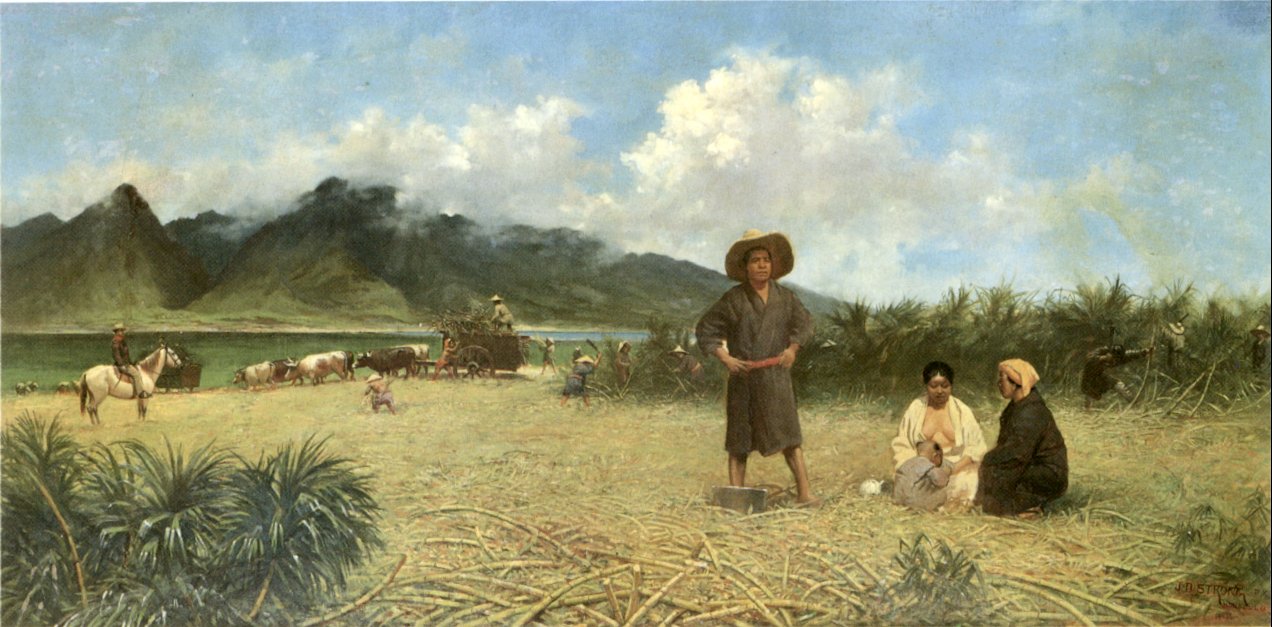Background
Early History
Polynesian travelers first landed in the Hawaiian Islands between 500-800 and settlements evolved into chiefdoms on each island. From 1782-1810, the chief of the island of Hawaiʻi, Kamehameha I united the archipelago of islands into a prosperous kingdom. In the 1820s, American missionaries arrived and established the first Hawaiian sugar plantations. By the 1850s, sugar was the dominant industry and export. The sugar industry established an elite of white, American-descended planters presiding over mostly Asian, non-Hawaiian, immigrant workers, who were often coerced or tricked to emigrate. As the planters’ wealth grew, so did their political influence and discontent with their perceived lack of governmental representation.
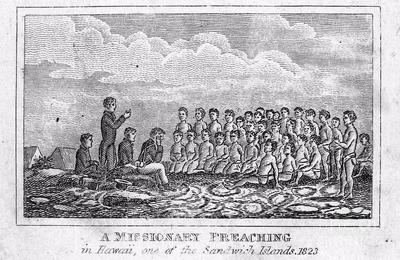
"A Missionary Preaching," 1823, Hawai’i Digital Newspaper Project
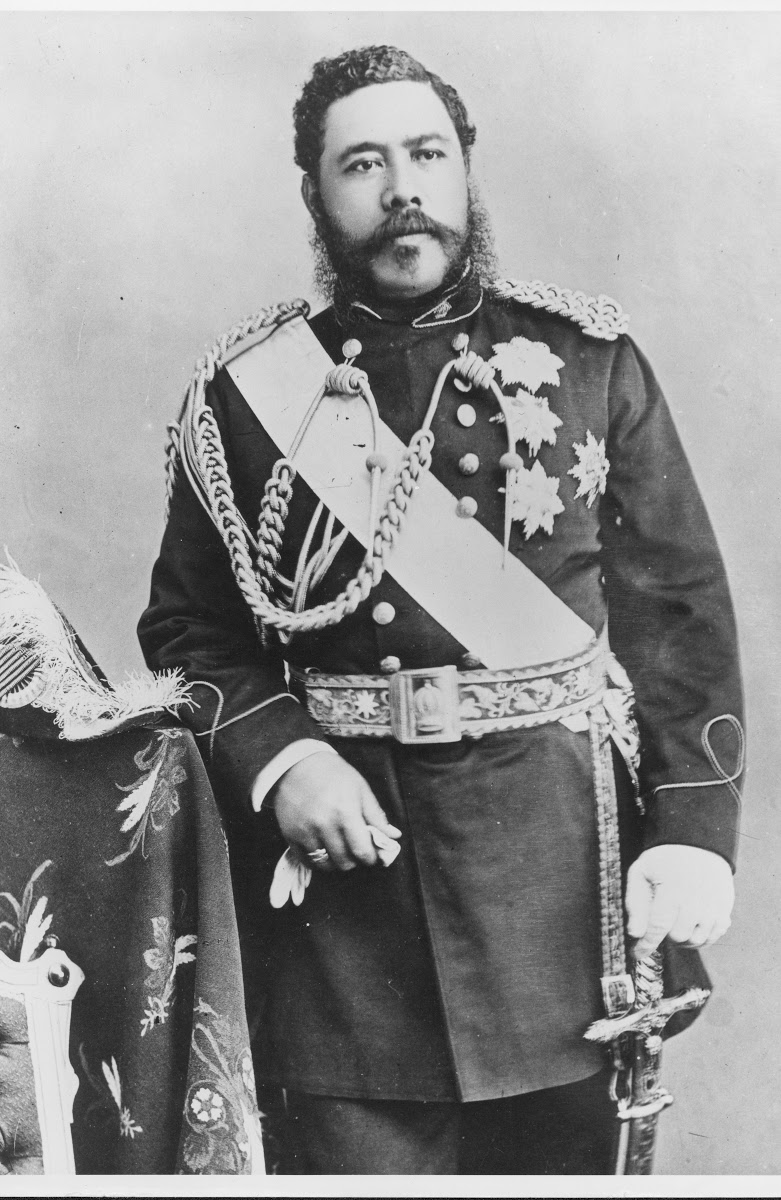
"King Kalakaua in dark military uniform with embroidered belt," ~1880, Digital Archives of Hawaiʻi
"I, Liliʻuokalani of Hawaii… do hereby protest against the ratification of a certain treaty… purporting to cede those Islands to the territory and dominion of the United States. I declare such a treaty to be an act of -wrong toward the native and part-native people of Hawaii, an invasion of the rights of the ruling chiefs, in violation of international rights both toward my people and toward friendly nations with whom they have made treaties, the perpetuation of the fraud whereby the constitutional government was overthrown, and, finally, an act of gross injustice to me."
~Queen Liliʻuokalani
"Ke Aloha O Ka Haku," composed by Liliʻuokalani while under house arrest post-overthrow, 1895
Translated lyrics:
"Your loving mercy
Is as high as Heaven
And your truth
So perfect
I live in sorrow
Imprisoned
You are my light
Your glory, my support
Behold not with malevolence
The sins of man
But forgive
And cleanse
And so, o Lord
Protect us beneath your wings
And let peace be our portion
Now and forever more"
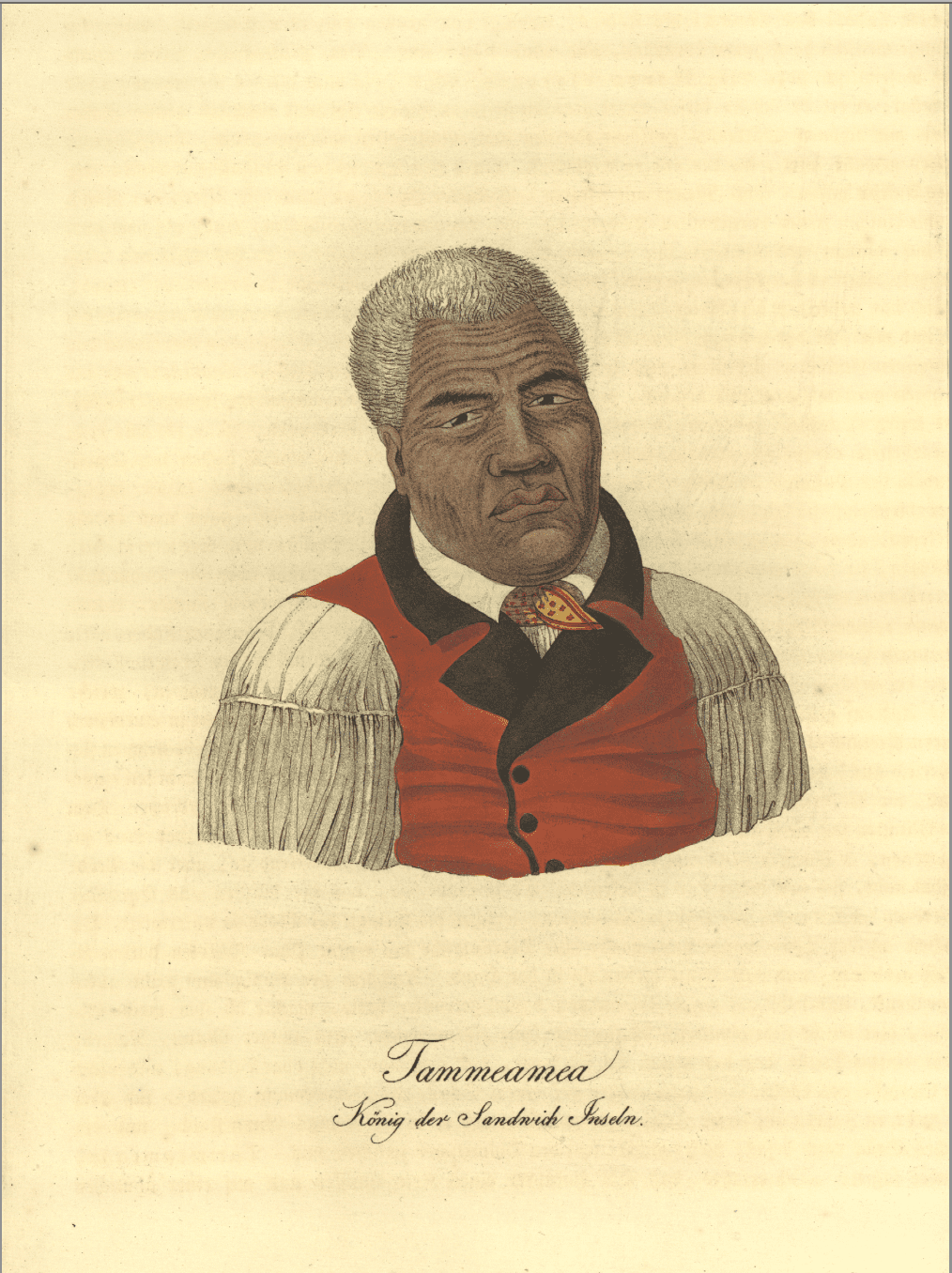
"Kamehameha in Red Vest," ~1820, Honolulu Civil Beat
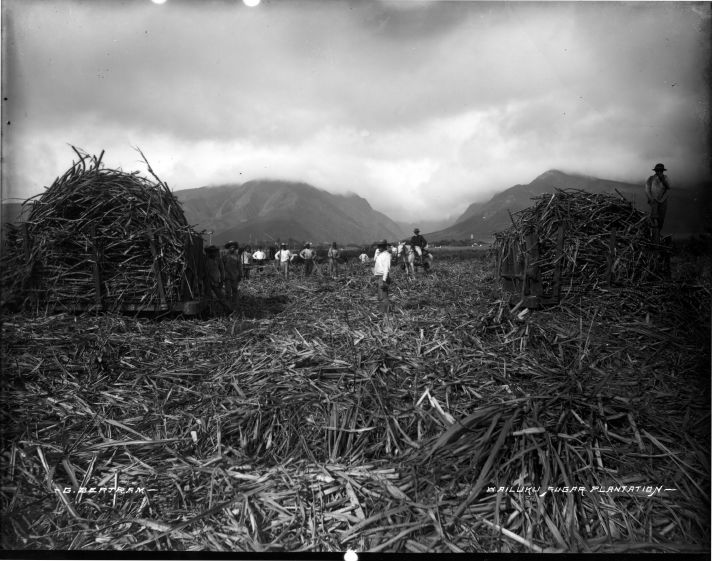
"Wailuku Sugar Plantation," 1883-1905, Ulukau
Scenes from Hawaiian sugar plantations, 1906, Thomas Edison
Overthrow and Annexation
In 1887, King Kalākaua, Kamehameha's grandson, was forced by the planters to sign a constitution giving them more power. In 1893, his successor, Queen Liliʻuokalani, was forced out by the planters after trying to change that constitution to grant more rights to native Hawaiians. American marines supported this overthrow, and the puppet Hawaiian Republic, led by planter Sanford Dole (of Dole Fruit fame), increased the wealthy planters' influence. On July 7, 1898, the US annexed the islands. On April 30, 1900, the Territory of Hawaiʻi was created.
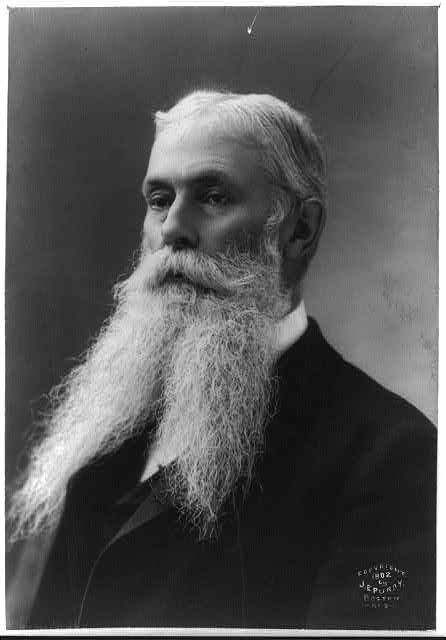
"Sanford B. Dole," 1902, Library of Congress
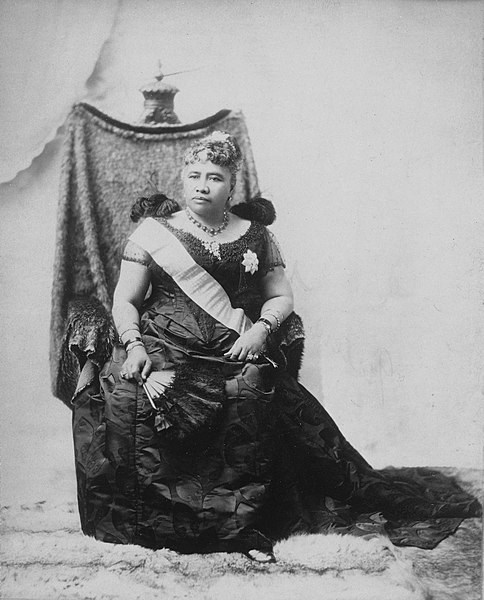
"Liliuokalani, the last sovereign of the Kamehameha dynasty that ruled the Hawaiian kingdom," 1891, Library of Congress
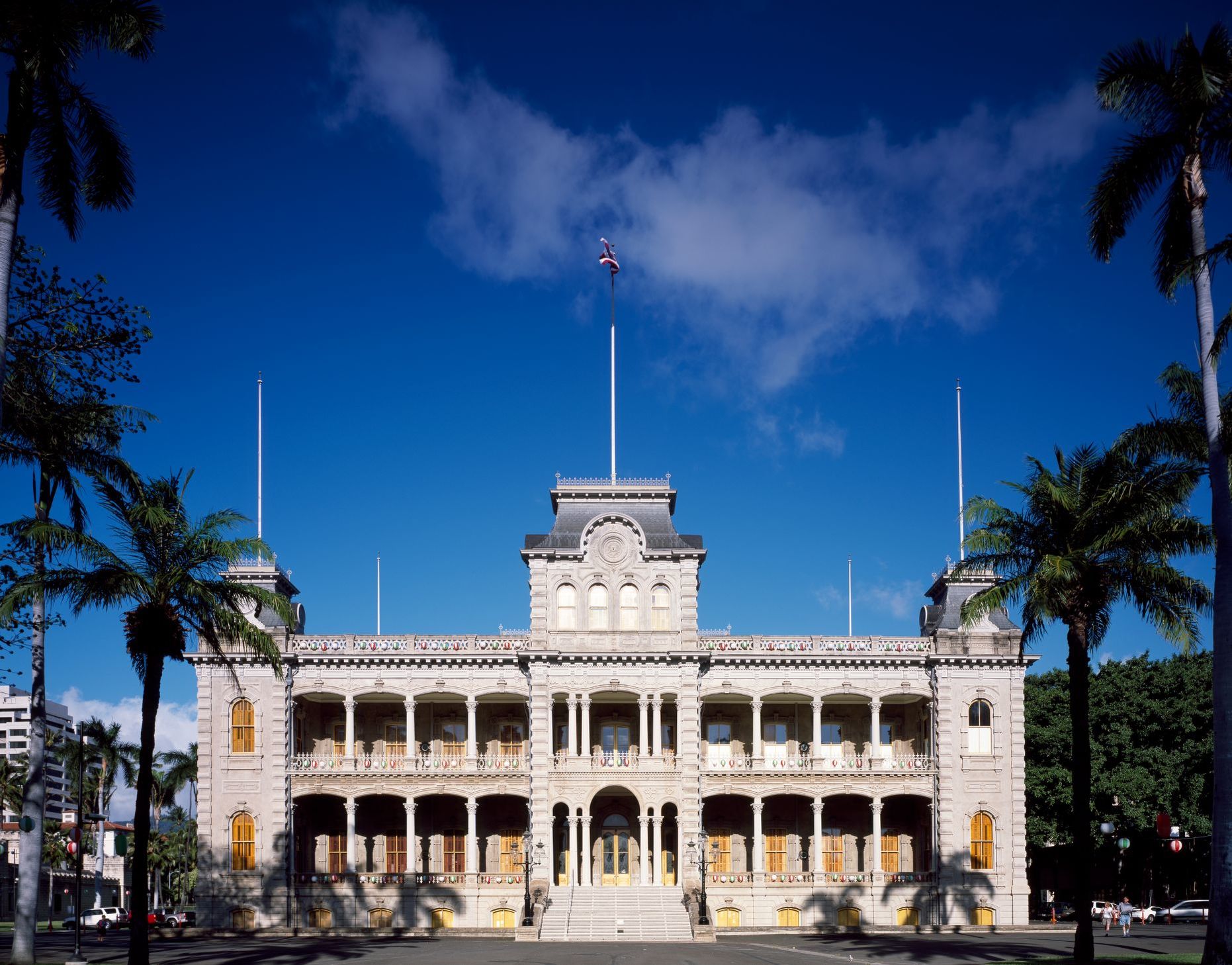
"'Iolani Palace," Hawaiian royal palace, 1980, Library of Congress
